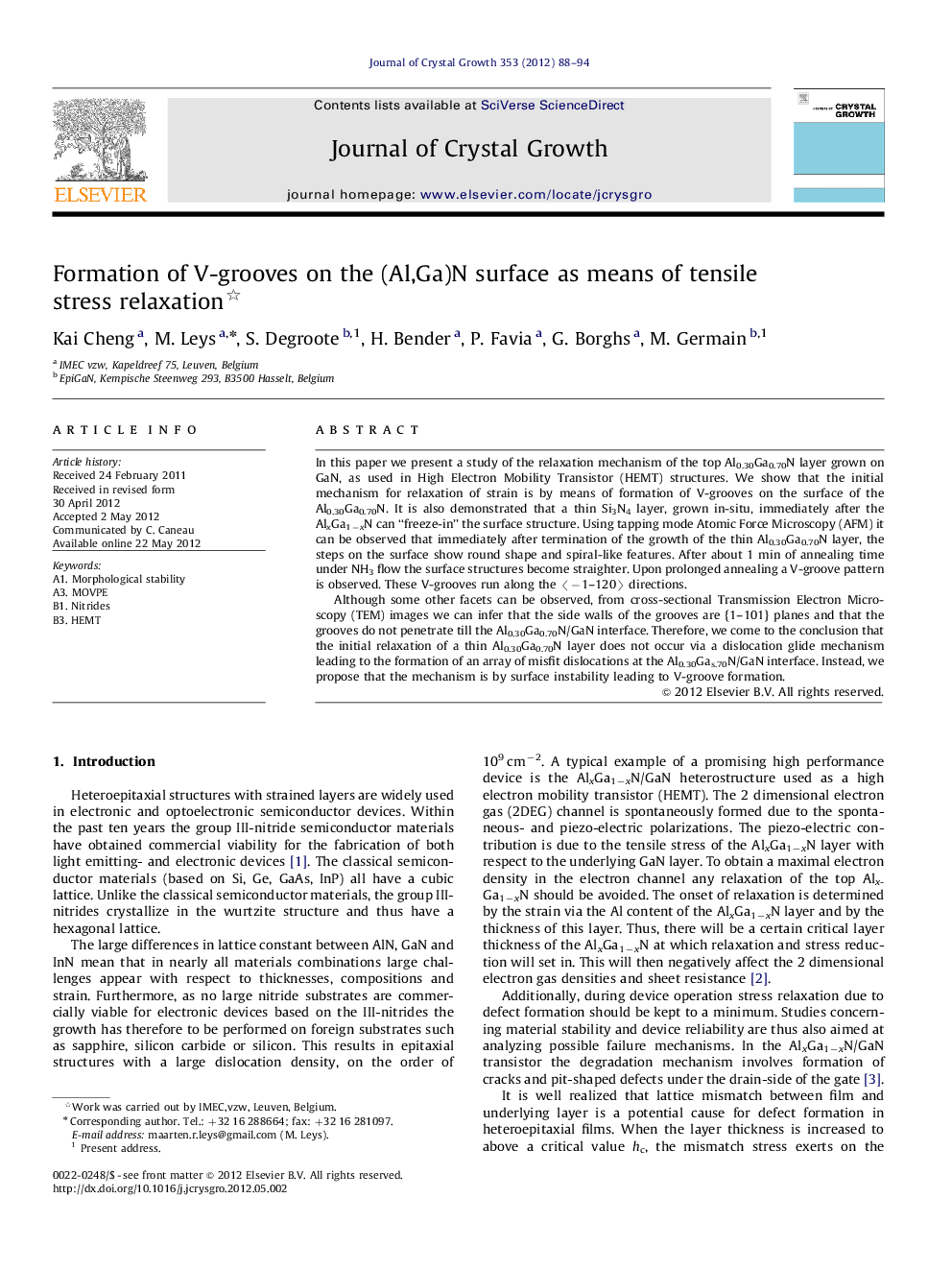| کد مقاله | کد نشریه | سال انتشار | مقاله انگلیسی | نسخه تمام متن |
|---|---|---|---|---|
| 1791649 | 1023616 | 2012 | 7 صفحه PDF | دانلود رایگان |

In this paper we present a study of the relaxation mechanism of the top Al0.30Ga0.70N layer grown on GaN, as used in High Electron Mobility Transistor (HEMT) structures. We show that the initial mechanism for relaxation of strain is by means of formation of V-grooves on the surface of the Al0.30Ga0.70N. It is also demonstrated that a thin Si3N4 layer, grown in-situ, immediately after the AlxGa1−xN can “freeze-in” the surface structure. Using tapping mode Atomic Force Microscopy (AFM) it can be observed that immediately after termination of the growth of the thin Al0.30Ga0.70N layer, the steps on the surface show round shape and spiral-like features. After about 1 min of annealing time under NH3 flow the surface structures become straighter. Upon prolonged annealing a V-groove pattern is observed. These V-grooves run along the 〈−1–120〉 directions.Although some other facets can be observed, from cross-sectional Transmission Electron Microscopy (TEM) images we can infer that the side walls of the grooves are {1–101} planes and that the grooves do not penetrate till the Al0.30Ga0.70N/GaN interface. Therefore, we come to the conclusion that the initial relaxation of a thin Al0.30Ga0.70N layer does not occur via a dislocation glide mechanism leading to the formation of an array of misfit dislocations at the Al0.30Gas.70N/GaN interface. Instead, we propose that the mechanism is by surface instability leading to V-groove formation.
► The performance of the AlGaN/GaN HEMT depends on the strain state of the AlGaN layer.
► The AlGaN layer grown on the GaN surface relaxes due to surface instability.
► A network of V-grooves is formed on the surface.
► The V-grooves are formed at the steps created by dislocations with screw component.
► It is shown that a thin, in-situ grown Si3N4 layer prevents this relaxation.
Journal: Journal of Crystal Growth - Volume 353, Issue 1, 15 August 2012, Pages 88–94